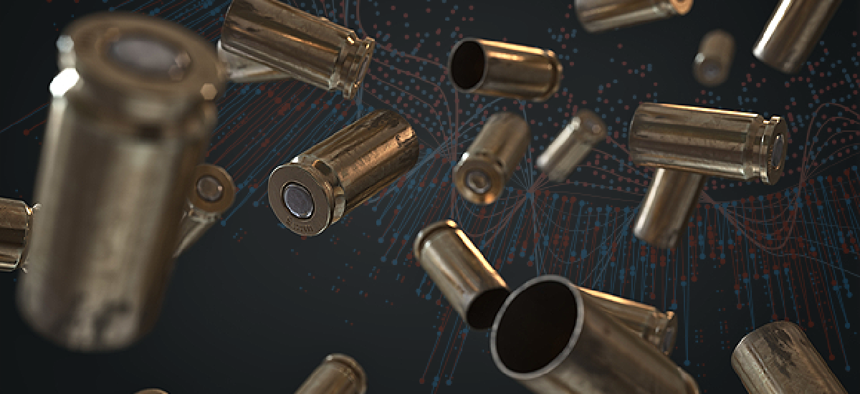ATF wants to expand its ballistics matching database

The searchable national ballistics database helps investigators match images from fired bullets and spent cartridges to other rounds that may have been fired from the same gun.
The Bureau of Alcohol, Tobacco, Firearms and Explosives' national ballistics network could be getting some help with its data-driven crime-fighting efforts.
In the White House's 2019 budget proposal, the Justice Department requested $8.9 million to support expansion of ATF's National Integrated Ballistic Information Network (NIBIN), a system that includes the bureau's national database of unique images of tool marks from fired bullets and spent cartridge cases as well as the hardware required to analyze evidence and access the images.
The network, established by combining two other ballistics databases in 1999, is made up of about 150 data acquisition stations across the country at state, federal and local law enforcement locations. NIBIN, according to the ATF, uses the Integrated Ballistics Identification System (IBIS1) originally manufactured by Forensic Technology Inc., which is now part of Ultra Electronics. Each station site consists of an automated optical microscope with special fixtures to hold cartridge cases and bullets and an interface to a regional database of ballistics images. The system can automatically correlate images with entries in the regional database using specialized software.
(The National Institute of Standards and Technology also has created a ballastics database that lacks some of NIBIN's proprietary and security-driven restrictions. That system, however, is strictly research-oriented, and does not include data from actual criminal casework.)
The additional money and personnel is intended to push NIBIN correlation and tracing services to an additional 25 to 30 sites in fiscal 2019; support additional training; increase the capacity of ballistic imaging and correlation hardware and software; and provide necessary infrastructure for further expansion of services to all sites by 2021.
An ATF spokesman said that the leads generated by the system would be provided to law enforcement within 24-48 hours of an incident. He also noted the new funding won't allow the system to capture ballistic information at point of manufacture, importation or sale of ammunition. Nor can it be used to capture the identity of the purchaser of the ammunition or information about the purchase.
According to a 2013 National Institute of Justice study, NIBIN "holds great promise as a tactical and strategic tool for law enforcement agencies."
The NIJ is the Justice Department's research and development agency.
Tactically, said the NIJ, the NIBIN data could be used to link crimes involving the same firearm and help identify suspects. In the larger strategic picture, it said the network could help law enforcement understand larger patterns of gun crime across communities.
However, NIJ concluded the effort is underfunded and needs some sorting out technically before it can reach its full potential. "In short, it is a tool with massive untapped potential due in part to chronic underfunding and … a limited vision of its capacity."
NEXT STORY: House dives into artificial intelligence





